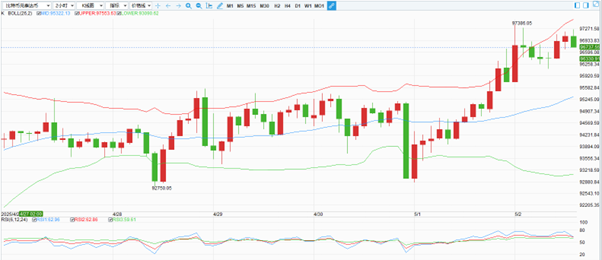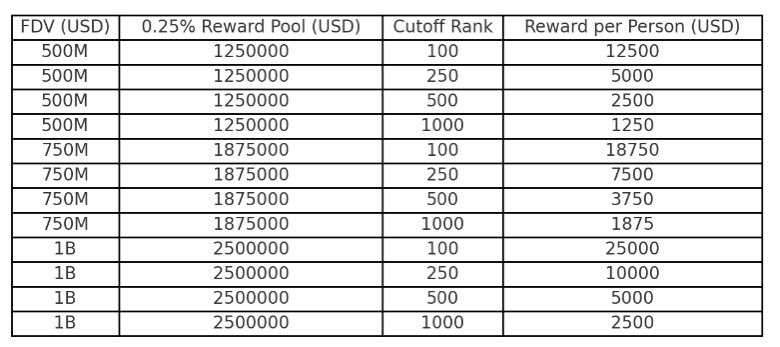The Intersection of Blockchain and Traditional Finance
The financial world is undergoing a seismic shift, driven by the convergence of blockchain technology and traditional financial systems. This transformation is not just about new tools and platforms; it’s about reimagining the very foundations of how we conduct transactions, manage investments, and ensure economic stability. Let’s explore the current landscape, highlighting the latest trends and analyses that are propelling this change.
The Current State of Crypto and Blockchain
The Crypto Market: A Rollercoaster Ride
The crypto market has been a rollercoaster of highs and lows, with Bitcoin and Ethereum leading the charge. As of May 2025, the market sentiment is a mix of optimism and caution. Bitcoin, often referred to as “digital gold,” continues to be a barometer for market sentiment. Its price movements often reflect broader economic trends and investor confidence. For instance, during periods of economic uncertainty, Bitcoin has often been seen as a safe haven, similar to gold. However, its volatility can make it a risky investment for those not familiar with the market dynamics [1].
Ethereum: More Than Just a Cryptocurrency
Ethereum is not just a cryptocurrency; it’s a platform for decentralized applications (dApps) and smart contracts. Its ecosystem is thriving, with numerous projects leveraging its capabilities to create innovative financial solutions. The introduction of Ethereum 2.0 has further enhanced its scalability and security, making it a preferred choice for developers and investors alike. Ethereum 2.0 aims to address some of the key issues facing the original Ethereum network, such as scalability and energy consumption, by transitioning to a proof-of-stake (PoS) consensus mechanism.
The Rise of Omnichain and DeFi
Seamless Interoperability with Omnichain
Omnichain technology is gaining traction as it allows for seamless interoperability between different blockchain networks. This interoperability is crucial for the growth of decentralized finance (DeFi), which aims to create a financial system that is open, transparent, and accessible to everyone. DeFi platforms are disrupting traditional financial services by offering lending, borrowing, and trading services without the need for intermediaries. This democratization of finance is one of the most exciting developments in the blockchain space.
DeFi: The Future of Finance
One of the most exciting developments in the DeFi space is the rise of liquidity pools and yield farming. These mechanisms allow users to earn passive income by providing liquidity to decentralized exchanges. However, they also come with risks, such as impermanent loss and smart contract vulnerabilities. Investors need to be well-informed and cautious when participating in these activities. The potential for high returns is enticing, but the risks are significant and should not be overlooked.
The Role of NFTs in the Financial Ecosystem
NFTs: A New Asset Class
Non-fungible tokens (NFTs) have emerged as a significant player in the financial landscape. NFTs represent unique digital assets, ranging from art and collectibles to real estate and intellectual property. They have opened up new avenues for investment and ownership, allowing creators and investors to monetize digital content in ways that were previously impossible. The NFT market has seen explosive growth, with high-profile sales and collaborations grabbing headlines.
Challenges and Opportunities
However, the NFT market is not without its challenges. Issues such as copyright infringement, market manipulation, and environmental concerns related to energy consumption have raised questions about the sustainability and ethics of the NFT ecosystem. Despite these challenges, the potential for NFTs to revolutionize various industries is immense. As the technology matures, we can expect to see more innovative use cases and a more robust regulatory framework.
Economic Indicators and Market Sentiment
Nonfarm Payrolls and Economic Health
Economic indicators play a crucial role in shaping market sentiment and investment decisions. Nonfarm payrolls, for instance, provide insights into the health of the job market, which in turn affects consumer spending and economic growth. The Federal Reserve’s monetary policy, including interest rates and quantitative easing, also has a significant impact on financial markets. In May 2025, the economic data suggests a mixed outlook. While some sectors are showing signs of recovery, others are still grappling with the aftermath of recent economic shocks.
Tech Stocks: A Barometer of Uncertainty
The tech stocks, in particular, have been volatile, reflecting the uncertainty in the global market. The Nasdaq, a key index for tech stocks, has seen fluctuations, with investors closely watching for signs of a rebound. The tech sector is often seen as a bellwether for the broader economy, and its performance can provide valuable insights into market sentiment and future trends [2].
The Impact of Global Events on Financial Markets
Geopolitical Tensions and Regulatory Changes
Global events, such as geopolitical tensions and regulatory changes, can have far-reaching effects on financial markets. For example, the imposition of tariffs by the U.S. government has led to increased costs for businesses and consumers, affecting supply chains and economic growth. Similarly, regulatory developments in the crypto space can either boost or hinder the adoption of blockchain technology. Investors need to stay informed about these events and their potential impact on their portfolios.
Diversification and Risk Management
Diversification and risk management strategies are essential for navigating the complexities of the current financial landscape. As global events continue to shape market dynamics, investors must be prepared to adapt their strategies and portfolios accordingly. This includes not only diversifying across different asset classes but also staying informed about regulatory changes and geopolitical developments.
The Future of Financial Analysis
The Role of AI and Machine Learning
As we look to the future, the role of artificial intelligence (AI) and machine learning in financial analysis is becoming increasingly important. AI-driven tools can process vast amounts of data and provide insights that would be impossible for human analysts to achieve. This technology is being integrated into various financial services, from trading algorithms to risk management systems. The ability to analyze large datasets in real-time can provide a competitive edge in the fast-paced world of finance.
The Intersection of Real-World Assets and AI
The intersection of real-world assets (RWA) and AI is also creating new opportunities. RWA tokenization platforms, for instance, allow for the digitization of physical assets, making them more accessible and liquid. This trend is likely to continue, as more industries explore the potential of blockchain and AI to transform their operations. The combination of AI and blockchain technology can create more efficient, transparent, and secure financial systems.
Conclusion: Embracing the Future
The convergence of blockchain technology and traditional finance is reshaping the financial landscape in profound ways. From the rise of DeFi and NFTs to the integration of AI and machine learning, the future of finance is being reimagined. As investors and analysts, it is crucial to stay informed and adapt to these changes. The challenges and opportunities that lie ahead will require a blend of innovation, caution, and strategic thinking. Embracing this future means being open to new ideas and technologies, while also being mindful of the risks and uncertainties that come with them. The journey is just beginning, and the possibilities are endless.
References





